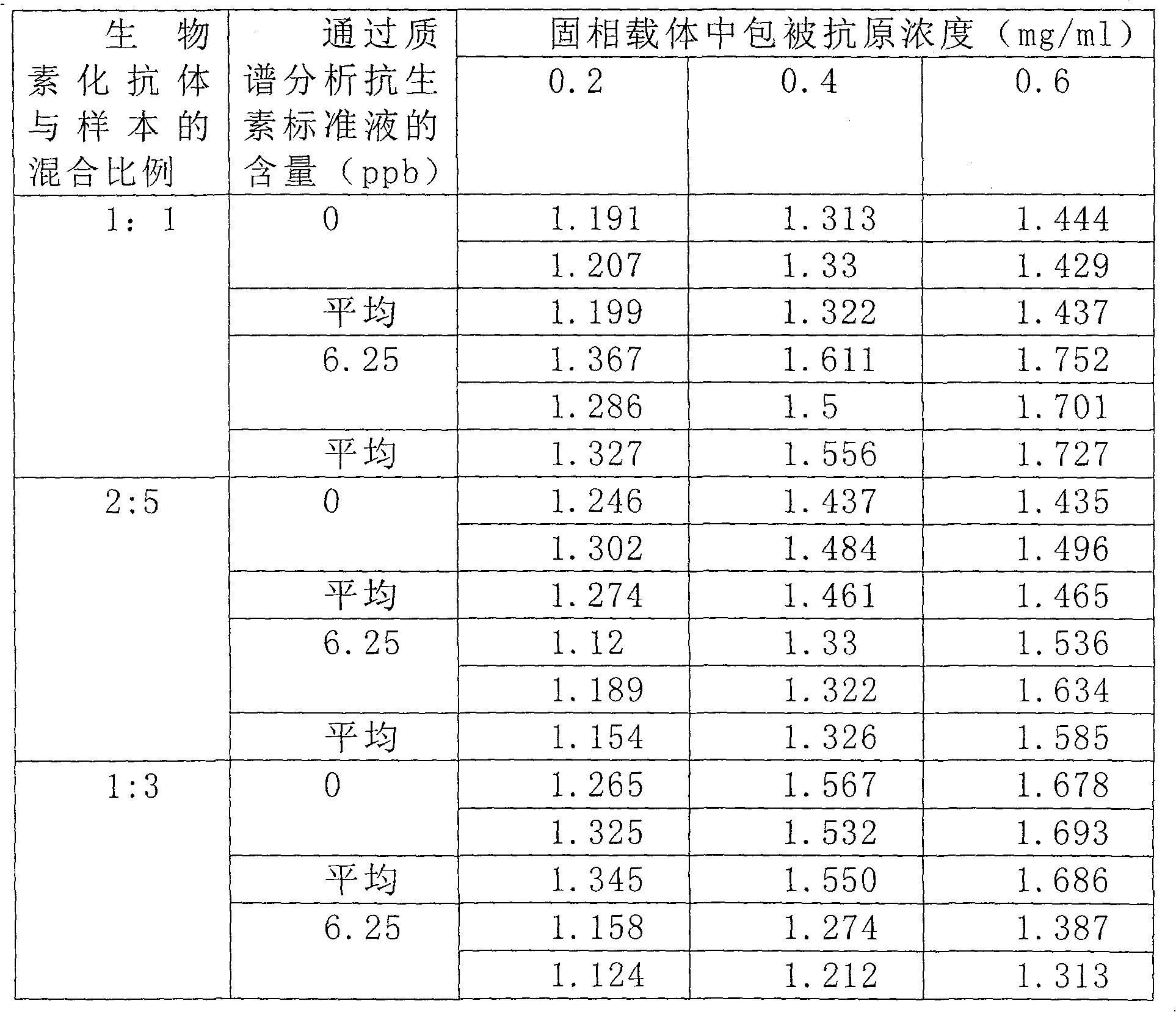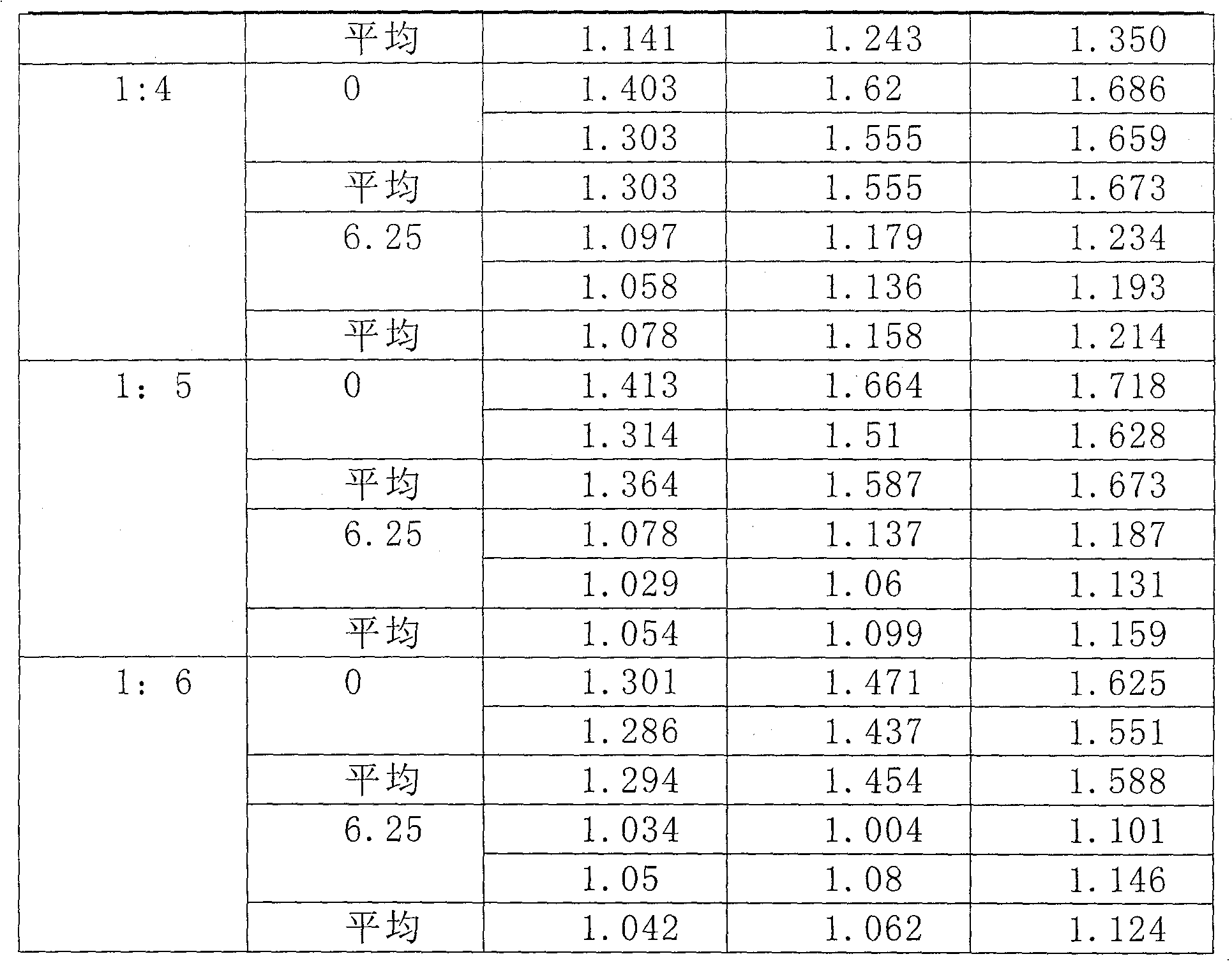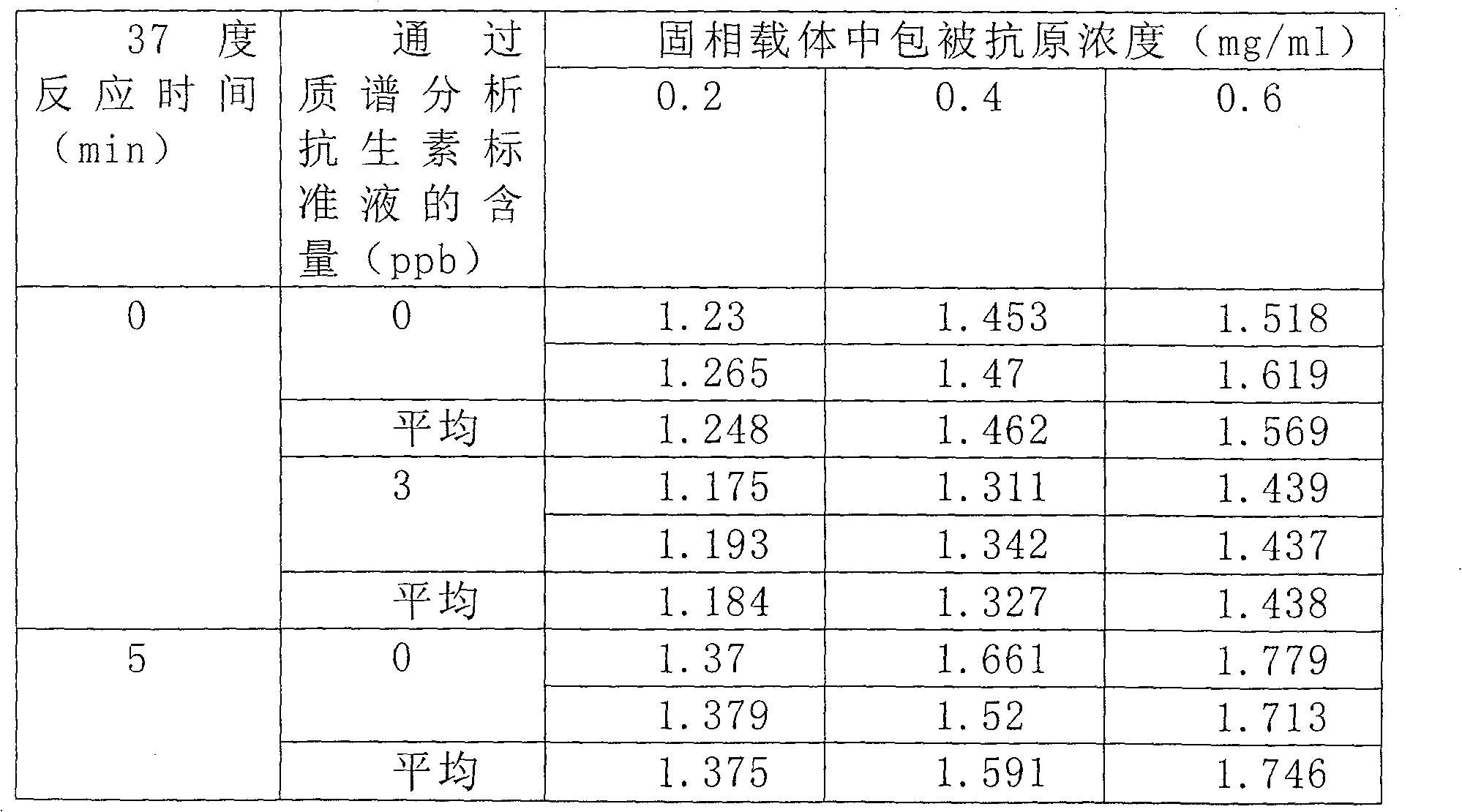Detecting method for quick detecting veterinary medicinal residue in food and agriculture and sideline products
A technology for residues of agricultural and sideline products and veterinary drugs, which is applied in the detection of veterinary drug residues in food and in the field of detection of agricultural and sideline products. short time effect
- Summary
- Abstract
- Description
- Claims
- Application Information
AI Technical Summary
Problems solved by technology
Method used
Image
Examples
Embodiment 1
[0043] Pretreatment of honey samples: Take 1g of honey, put it into a centrifuge tube, add 2mL of distilled water to dissolve; add 2mL of ethyl acetate to shake for 10min; centrifuge at 3000g at room temperature for 10min; In a test tube, blow dry with N2 at 60°C; dissolve the residue with 0.5mL buffer 1; take 50uL for analysis.
[0044] Shrimp sample pretreatment: shell the shrimp sample, homogenize the sample with a homogenizer; take 3g of the homogenized sample, put it into a centrifuge tube, add 6mL of ethyl acetate to shake for 10min; centrifuge at 3000g at room temperature for 10min; take out 2mL of the upper layer of acetic acid Ethyl ester (equivalent to 1 g sample) was dried under N2 at 60°C.
[0045] Preparation of washing solution: 54g Tris, 27.5g boric acid, dissolve with a small amount of DD-H2O, add 20ml 0.5mol / L EDTA-Na2 (PH 8.0), add DD-H2O to make the volume to 1000ml. Add 200ml of saturated (NH4)2SO4 solution, 40ml of Tween-20 and 480ml of DD-H2O, and mix we...
Embodiment 2
[0055] The pretreatment of sample and the preparation of washing solution are the same as in Example 1
[0056] Preparation of reagent biotinylated antibody: Take 1g of biotin, suspend it in 12ml N,N dimethylformamide DMF, add 0.6g N-hydroxysuccinimide HOSU and 0.8g dicyclohexylcarbodiimide DCC was placed in an airtight container and magnetically stirred overnight at room temperature. The filtrate was spun to dryness. Add 10ml of diethyl ether for washing, and then add 200ml of isopropanol for crystallization to obtain white powdery activated biotin crystals. Use DMF to make BNHS into a 1mg / mL solution; dilute the antibody to be labeled with 0.10mol / L sodium bicarbonate solution with a pH value of 9.0 to 2mg / ml, and after dialysis, use 1mg / ml BNHS: antibody to be labeled = 1 : 10 and mix with occasional shaking for 3 hours. Add 0.05mol / L, pH7.4 PBS solution into the dialysis bag, dialyze overnight at 4°C, and dilute to the working concentration when used.
[0057] Reagent ...
Embodiment 3
[0061] The pretreatment of sample and the preparation of washing solution are the same as in Example 1
[0062] Preparation of reagent biotinylated antibody: take 1g of biotin, suspend it in 12ml N,N dimethylformamide DMF, add 0.6g N-hydroxysuccinimide HOSU and 0.8g dicyclohexylcarbodiimide DCC , placed in an airtight container, and magnetically stirred overnight at room temperature. The filtrate was spun to dryness. Add 10ml of diethyl ether for washing, and then add 200ml of isopropanol for crystallization to obtain white powdery activated biotin crystals. Use DMF to make BNHS into a 1.2 mg / mL solution; dilute the antibody to be labeled with 0.12 mol / L sodium bicarbonate solution with a pH value of 9.2 to 32 mg / ml, and after dialysis, use 1 mg / ml BNHS: Antibody to be labeled = Mix at a ratio of 1:15 with occasional shaking for 5 hours. Add 0.1mol / L, pH7.6 PBS solution into the dialysis bag, dialyze overnight at 4°C, and dilute to the working concentration when used.
[0...
PUM
 Login to View More
Login to View More Abstract
Description
Claims
Application Information
 Login to View More
Login to View More - R&D
- Intellectual Property
- Life Sciences
- Materials
- Tech Scout
- Unparalleled Data Quality
- Higher Quality Content
- 60% Fewer Hallucinations
Browse by: Latest US Patents, China's latest patents, Technical Efficacy Thesaurus, Application Domain, Technology Topic, Popular Technical Reports.
© 2025 PatSnap. All rights reserved.Legal|Privacy policy|Modern Slavery Act Transparency Statement|Sitemap|About US| Contact US: help@patsnap.com



